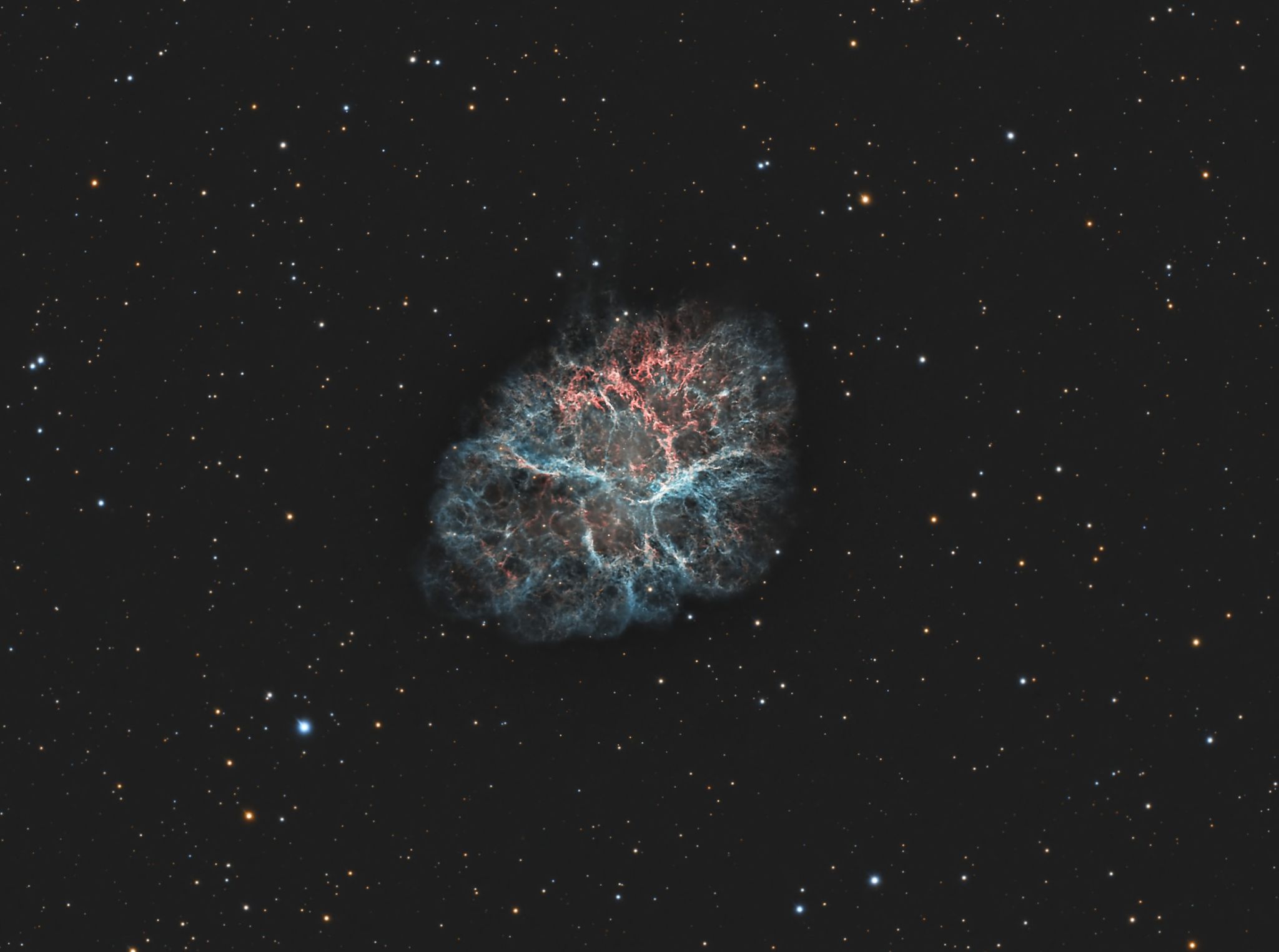EarthSky Community Photos
Submit your photo here. Comment or upvote on photo pages. Search via photographers' names. More improvements coming! To help, please donate.

North Java, NY, USA
11:00 pm
Image captured at the Buffalo Astronomical Association's (my local Astronomy club's Dark sky Observatory) in North Java, NY.
Telescope: Celestron 14" Edge HD w/Celeston 0.7x Reducer
Mount: Astro Physics AP-1200
Personal Equipment Used:
ZWO ASI 2600MC Pro camera and Optolong L-eXtreme dual-narrowband filter
This is my process of the data we collected that night. All pre and post processing was completed in PixInsight. Notable processes/scripts used include Blink, WBPP, GraXpert, BlurXTereminator, NoiseXTerminator, StarXTerminator, Histogram Transformation, Narrowband Normalization, Curves, SCNR, Unsharp Mask, Local Histogram Equalization, and Multiscale Median Transform.
It has been several months since we have had a clear night. It was clear Saturday night 2/3/2024 into Sunday morning 2/4/2024. Our Astronomy club’s imaging group assembled at our Dark Sky Observatory. We call ourselves the Tuesday Night Imagers, but Tuesday night can be any night of the week. We put my camera (ZWO ASI2600MC Pro) on the club’s Celestron 14” Edge HD Telescope which is on an Astro Physics AP-1200 mount. An Optolong L-eXtreme Dual-Narrowband filter was used to target specific wavelengths of light.
Our target was Messier 1 (M1) a.k.a. The Crab Nebula. M1 is a supernova remnant located in the constellation Taurus. Humans observed the Supernova when it occurred in 1054. It was recorded by Chinese astronomers and appears the event is also depicted in Petroglyphs in Arizona and New Mexico. The supernova also left behind a stellar remnant known as a Pulsar. The Crab Pulsar rotates 30.2 times per second. M1 is about 6,300 light-years from Earth and is about 13 x 11 light-years across. The nebula is expanding at a rate of 1,800 km/sec.
We managed to collect 14 subs at 600 sec each for a total exposure of 140 minutes. The image was processed in PixInsight in two different color schemes (one based on the Hubble palette and the other based on HOO scheme). I prefer the HOO version which is the one submitted.








